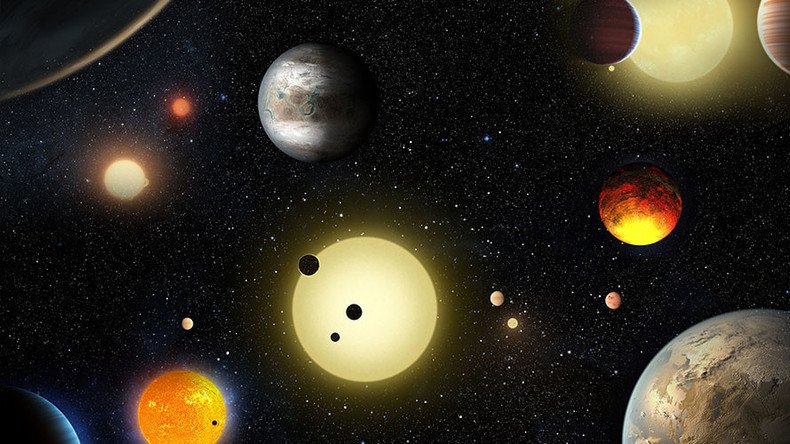Kepler Spacecraft telescope discovers crop of 104 new planets, 4 look promising

In the race to find somewhere habitable in the cosmos, NASA’s Kepler Space Telescope has identified 104 new planets outside of our galaxy. Among them were four “promising planets” that could potentially accommodate life.
Scientists say the four planets are in Earth’s size-range, orbiting a single dwarf star. NASA said in a statement that two are “too hot to support life as we know, but two are in the star’s ‘habitable’ zone, where liquid water could exist on the surface.”
Discovery: 100+ new planets around distant stars, one w/ 4 possible rocky worlds https://t.co/2eTW4F6B18@NASAKeplerpic.twitter.com/9hQtB4eKWc
— NASA (@NASA) July 18, 2016
An international team of astronomers from Hawaii, California and Arizona, confirmed the latest discovery from an initial cache of 197 exoplanets.
The space agency said the rocky worlds, between 20 and 50 percent larger than Earth by diameter, were far closer to their star than Mercury is to Earth’s sun, but because the star is smaller and cooler, its habitable zone is much closer. The planets’ orbital periods ranged from five and half to 24 days, and two may experience “irradiation levels from their star comparable to those on Earth.”
“One of the two planets in the habitable zone, K2-72c, has a “year” about 15 Earth-days long – the time it takes to complete one orbit,” said NASA. “This closer planet is likely about 10 percent warmer than Earth. On the second, K2-72e, a year lasts 24 Earth days, this slightly more distant planet would be about 6 percent colder than Earth.”
Kepler confirms more than 100 #planets in single trove https://t.co/EghJOiC2e3
— Phys.org (@physorg_com) July 18, 2016
The researchers confirmed the latest “roundup” of exoplanets by combining data with follow-up observations by Earth-based telescopes, including the North Gemini telescope and the W. M. Keck Observatory in Hawaii, the Automated Planet Finder of the University of California Observatories, and the Large Binocular Telescope, operated by the University of Arizona.
The Kepler Space Telescope was launched in 2009 to find planets similar in size to Earth and which may be able to support life. Over a four-year period, Kepler monitored 150,000 stars in the northern and southern hemispheres for any change in brightness that could come from a passing planet. In the spacecraft’s extended mission in 2013, the telescope lost its ability to precisely stare at it original target area. A “brilliant fix” created a second life the telescope.
NASA's Kepler telescope finds 9 potentially habitable planets — RT America https://t.co/XEsqkDtzYg
— kben weg (@kbenweg) May 10, 2016
Nearly 5,000 planet candidates have been found overall, NASA said. More than 3,200 of those have been verified as planets, with Kepler discovering 2,325 of those.
"This bountiful list of validated exoplanets from the K2 mission highlights the fact that the targeted examination of bright stars and nearby stars along the ecliptic is providing many interesting new planets,” said Steve Howell, project scientist for the K2 mission at NASA’s Ames Research Center in Moffett Field, California, in the statement. “These targets allow the astronomical community ease of follow-up and characterization, providing a few gems for first study by the James Webb Space Telescope, which could perhaps tell us about the planets’ atmospheres.”
‘Earth 2.0’? NASA’s Kepler telescope finds first planet similar to our own http://t.co/FM9yHk2xtMpic.twitter.com/GYThD1IP0M
— RT America (@RT_America) July 24, 2015
The latest discoveries are published online in the Astrophysical Journal Supplement Series.













